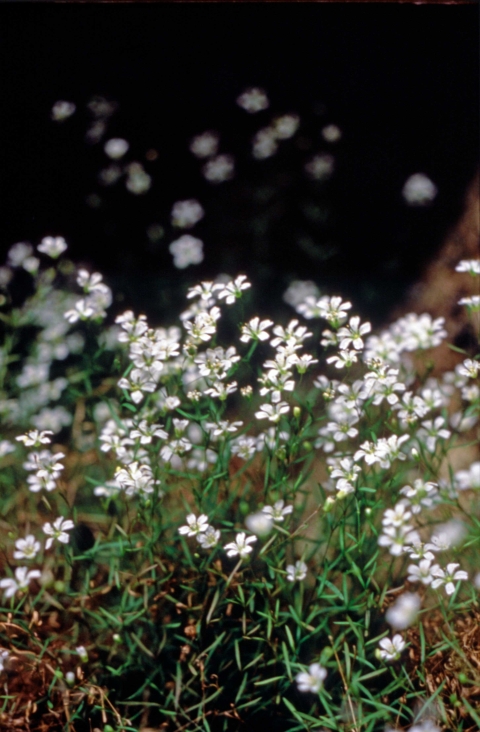After more than three decades of conservation partnerships inspired by the Endangered Species Act and a thorough review of the best available science, the U.S. Fish and Wildlife Service is delisting the Cumberland sandwort due to recovery.
“Partnerships are the key to the success of the Endangered Species Act,” said Leopoldo Miranda-Castro, Service Regional Director. “Playing critical roles in the recovery of this delicate flower were the National Park Service, U.S. Forest Service, states of Tennessee and Kentucky, Cincinnati Zoo and Botanical Garden and Missouri Botanical Garden. Thanks to these efforts, future generations will have the opportunity to enjoy the sandwort and the plants and animals that share its habitat.”
Found only in a small portion of the Cumberland Plateau in northern Tennessee and southern Kentucky, the Cumberland sandwort was headed toward extinction before it was listed under the Endangered Species Act (ESA) in 1988. That’s when the states of Tennessee and Kentucky, federal agencies and conservation groups stepped in to protect and restore this unique plant.
At the time of listing, the Service was aware of only 28 occurrence of the plant. The species faced threats from overuse or destruction of habitat from recreational activities in the sandstone cliffllines where it occurs. Land protection and habitat management by diverse partners have been vital to protecting and recovering the sandwort.
Conservation actions on behalf of the sandwort included installing signs, fencing and boardwalks to educate visitors about public lands and plant protection. Today, sandwort populations are healthy and stable and are found in 71 places. Sixty-six of those occurrences are on federal and state conservation lands managed by the National Park Service, Tennessee Division of Forestry, Tennessee Division of Natural Areas, or Tennessee State Parks. Pickett State Forest, owned by the Tennessee Division of Forestry, has 29 occurrences alone.
To help ensure the Cumberland sandwort remains secure from the risk of extinction after it is delisted, the Service will work with partners to implement a post-delisting monitoring plan (PDM). The PDM will define thresholds for monitoring of sandwort populations for at least five years following its delisting.
While the Service recommended downlisting the sandwort from endangered to threatened in this document, new information indicated threats had been further reduced, and new populations were discovered, thus supporting the species delisting.
The proposed and final rules, supporting documents, the post-delisting monitoring plan, and the comments received on the proposed rule are available on regulations.gov under Docket No. FWS–R4–ES–2019-0080.





